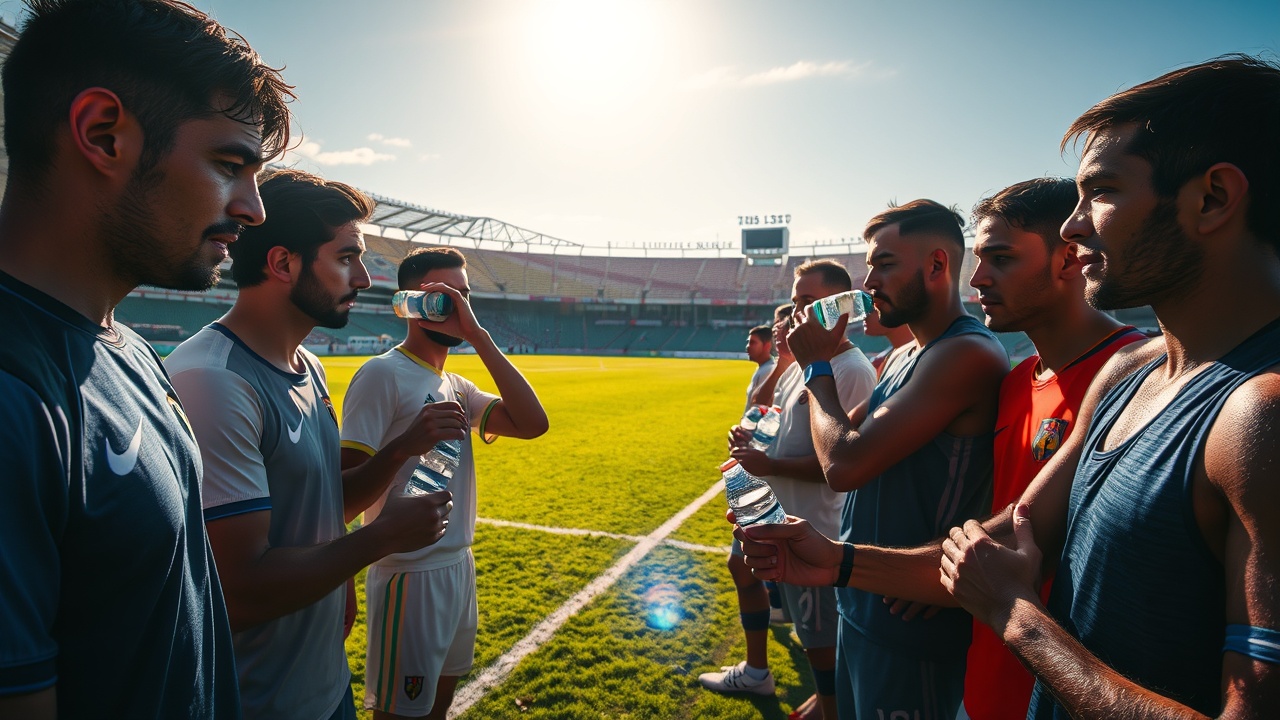Heatwave Challenges for Athletes
As a heatwave envelops the United States, it poses significant challenges for athletes and supporters attending the Club World Cup. High temperatures have forced players to adopt various cooling techniques, like draping themselves in ice towels and submerging their extremities in cold water. On a particularly sweltering day in Charlotte, star player Harry Kane even resorted to soaking his head to battle the heat.
Experiences in Extreme Conditions
At Cincinnati’s TQL Stadium, the Borussia Dortmund substitutes avoided the sidelines’ oppressive conditions by watching their match against Mamelodi Sundowns from the locker room. Following their victory in the sweltering 32°C (89.6°F) weather, coach Niko Kovac remarked on the uncomfortable experience, likening it to emerging from a sauna.
Similarly, after competing against Paris Saint-Germain in Pasadena, Atletico Madrid midfielder Marcos Llorente expressed that the conditions were unbearably hot, stating,
“My toenails were hurting.”
Chelsea faced even grimmer circumstances in Philadelphia, with temperatures soaring to about 36°C (97°F) that felt like a staggering 41°C (106°F) due to humidity. Chelsea’s coach, Enzo Maresca, acknowledged the weather’s impact, noting that training sessions were substantially cut short and nearly impossible due to the heat.
Physiological Impact of Heat on Athletes
Understanding the physiological effects of heat on athletes is crucial, especially as the world approaches the next World Cup scheduled for June and July 2026 in the U.S., Canada, and Mexico. Dr. Chris Tyler, an environmental physiologist, explains that exertion in elevated temperatures will cause the body’s temperature to rise, typically sitting at about 37°C (98.6°F) when at rest; even a mere two to three degree increase can lead to adverse effects. This spike forces the heart to pump harder as blood is diverted to the skin to facilitate cooling, leaving less blood for vital organs and thereby increasing fatigue during exertion.
Athletes in these extreme conditions will also exhibit more rapid perspiration, which Dr. Geoff Scott, former head of sports science at Tottenham Hotspur, notes can lead to significant fluid loss—up to five liters during intensely hot games, compared to two liters in cooler climates. Ensuring hydration, especially with electrolytes, is critical to counteract the risks of dehydration that can manifest as dizziness, fatigue, and muscle cramps.
Sweating serves a dual purpose—it cools the body while causing fluid loss. However, in humid conditions, sweat cannot evaporate efficiently, which can exacerbate dehydration. If athletes do not manage their body heat effectively, they risk severe consequences like heatstroke.
Adaptive Strategies and Training
In response to the heat, players often adjust their gameplay. Teams tend to conserve energy with a more possession-based strategy to mitigate the physical strains of high temperatures. Over time, athletes can physiologically adapt to hot climates by increasing their blood plasma volume, which helps minimize strain on the heart. This adaptation usually requires time—a minimum of five to seven days—making the tight schedule of the Club World Cup a complicated matter for teams not accustomed to high heat.
Many participating squads hail from cooler climates, presenting an added difficulty. To remedy this, teams are now incorporating specific heat adaptation training, such as using heat tents to simulate the upcoming conditions. This strategy was employed by England’s national team during a recent training camp, focusing on elevating players’ performance in hot scenarios.
Additionally, leading clubs like Manchester City have opted to train at midday in Florida’s blistering heat, while Juventus has synchronized their training schedules with game times to better mimic conditions players will face during the competition.
Proactive Measures for Player Safety
In anticipation of similar conditions during the upcoming World Cup, FIFA has recognized the risks associated with extreme heat and initiated policies to provide cooling breaks when environmental measures indicate temperatures exceed safe levels. The ongoing dialogue between FIFA and clubs regarding heat management illustrates a proactive approach to ensuring player safety.
The events surrounding the Club World Cup manifest a valuable lesson for the participants as they prepare for next summer’s global tournament. The anticipated fierce competition may not just lie against rival teams, but also against the unyielding heat that demands vigilant preparation and adaptation.




